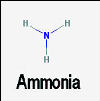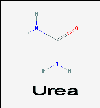Chronic
kidney failure in cats and dogs: treatment and prevention
By
Lark L.
Burnham, Ph.D.
Seventy-five percent of all
cats and ten percent of all dogs in the United States will die of chronic kidney
disease. The kidneys take water out of urine for reuse in the body, while making
the non-water contents more concentrated. This can lead to kidney disease if
water intake is inadequate, and the ammonia from ingested protein is higher than
normal.
Pets in the United States
are often fed dry food. This is not usually a problem for most dogs as long as
free-choice fresh, clean water is always available. Dogs’ food is also generally
lower in protein than that sold for cats in any form.
Domestic cats are descended
from desert cats which had limited access to water. Their kidneys take more out
of urine for re-use. This is why cat urine has a strong smell, it is much more
concentrated that that from dogs. Healthy cats do not generally drink as much
water/kg of body weight as dogs, which means less water in and more taken out
for recycling.
Urine contains ammonia,
which is both a waste product of protein digestion and of cell metabolism. It is
also toxic. Although cell metabolism can’t be changed, ammonia from protein
digestion is another matter. Food protein molecules are very large, so large
that the immune system can mistake them for pathogens. The body attacks these
large molecules and an inflammatory response occurs. This is known as food
allergy and can occur in both humans and pets.
Conventional wisdom
recommends that protein intake be decreased in pets with kidney disease. Those
large protein molecules must be disassembled by enzymes called proteases into
their amino acid components while still in the gut. Amino acids are carbon
chains similar to glucose, but with an amine group attached at some point (amine
– ammonia).
Amine groups (NH3)
must be removed by other enzymes called deaminases before the carbon can be used
for energy. The freed amine groups are bundled by twos into a molecule of urea (CH4N2O or
NH2CONH2),
which can travel safely through the gut wall to the liver for processing.
Diagrams of urea and ammonia appear below.
A simple urine test can
detect kidney failure. The earlier it is discovered and treated, the less damage
to the kidneys. One routine part of urinalysis tests for blood urea nitrogen, or
BUN. Blood urea levels rise when kidney function is impaired. The proteinuria
test detects small proteins like albumin, which do not necessarily come from
food. Protein in the urine may indicate that the kidneys are not performing
normally.
WARNING SIGNS: increased
drinking and urination. These increase because the kidneys are unable to pull
out enough water for recycling, pets try to meet this need by drinking more.
Dehydration is a real threat, test for it by pulling up on the skin between the
shoulder blades and watch how fast it snaps back. Fast is normal, very slow
means very dehydrated. Water must be given under the skin by needle as soon as
possible for animals with a very slow response.
Excess water intake and
urination are also symptoms of diabetes. Both kidney disease and diabetes are
life threatening, a simple urine test is used by veterinarians to determination.

Ammonia chemical structure

Urea chemical structure
Prevention
Insure that adequate fresh,
clean water is available at all times. Canned pet food contains more water than
dry food, which means less fresh water is necessary. This is readily
demonstrated if pets on one are switched to the other, water disappearance can
be dramatically different. Cats should get fresh water every day, in a clean
dish. Do whatever it takes to encourage water consumption. Check the dish
throughout the day to make sure it is full, and debris has not dropped into it.
Treatment
The goal of treatment is to
reduce the amine load on the kidneys, especially if they are damaged. There is a
soluble fiber called pectin, which is widely available for the making of jams
and jellies. Pectin absorbs water and many non-fluid molecules and carries them
to the colon. Microorganisms in the gut ferment pectin and the trapped
molecules, including water, are slowly released and excreted in the feces.
Pectin traps urea and
prevents it from being absorbed through the gut wall. In short, less ammonia
reaches the kidneys. The reduction in urinary ammonia is illustrated by the
dramatic decrease in litter-box odor when cats are fed MSE Natural Defense,
which uses pectin as a carrier.
MSE Natural Defense is a
concentrated probiotic, animals that have not been on some form of MSE will have
to be started at a much lower level than the recommended dose, and then slowly
increased over a two week period. Start with a pinch/day, maintain for three
days, and then go to 2 pinches/day and repeat. Jumping to the full dose
immediately can cause diarrhea. Final doses: a half teaspoon/day for cats,
and a full teaspoon/day for dogs.
MSE Natural Defense v.
pectin
Kidney disease is a chronic
condition, chronic illnesses incur higher levels of stress. This means that the
immune system is impaired. Adding MSE Natural Defense to the diet of both
healthy and affected animals will both prevent future kidney disease and reduce
the ammonia load on the kidneys of pets diagnosed with this disease.
Both pectin and MSE Natural
Defense clump when mixed with water. Sprinkle on canned food (especially gravy
varieties) without mixing to insure palatability. An alternative is to mix MSE
Natural Defense with either MSE Natural Defense Soluble (which as a much lower
level of pectin) or with ME Calm Defense. Both of these products mix well with
liquids and are more palatable than MSE Natural Defense. A special kidney combo
of MSE Natural Defense and MSE Calm Defense is available on our website (https://www.naturs-way.com/naturspetstore/).
MSE Calm Defense is highly
recommended to mix with Natural Defense for pets who are receiving fluids under
the skin. This is a stressful process for all concerned and a jumpy pet only
makes it worse. The combination of MSE Natural Defense and MSE Calm Defense (can
be mixed and stored in the refrigerator in an easy-to-use container) both helps
lower amines going to the kidneys and calms pets during those traumatic poke
sessions.
Prevention
1)
Free-choice fresh, clean water
2)
Canned food only to increase
moisture intake
3)
MSE Natural Defense (may be spread
over two meals)
Write
Lark Burnham if you have any questions.

